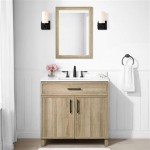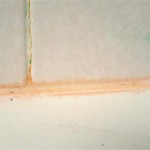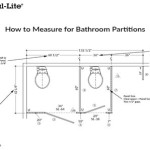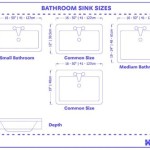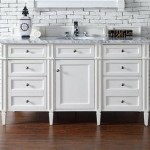Recessed Lighting Bathroom Ideas: Illuminating Your Space with Precision and Style
Recessed lighting, also known as can lights or pot lights, is a popular and versatile lighting solution, particularly well-suited for bathrooms. These fixtures are installed directly into the ceiling, offering a clean, minimalist aesthetic while providing ample illumination. The discreet nature of recessed lighting makes it ideal for bathrooms of any size, from compact powder rooms to spacious master suites. However, effective implementation requires careful planning and consideration of various factors to ensure optimal performance and visual appeal.
This article explores various recessed lighting bathroom ideas, examining the key considerations, suitable types of fixtures, and strategic placement techniques to create a well-lit and functional bathroom environment. Proper planning is essential to avoid common pitfalls such as insufficient light, harsh shadows, or glare. By understanding the nuances of recessed lighting, homeowners can transform their bathrooms into well-illuminated and aesthetically pleasing spaces.
Understanding the Basics of Recessed Lighting
Recessed lighting consists of two main components: the housing (also called the can) and the trim. The housing is the metal enclosure that is installed within the ceiling cavity and contains the electrical connections. The trim is the visible portion of the fixture, housing the bulb and directing the light. Different types of housings are available, including IC-rated (Insulation Contact) and non-IC-rated. IC-rated housings are designed to be in direct contact with insulation, preventing overheating and reducing fire hazards. These are essential for bathrooms with insulated ceilings. Non-IC-rated housings require a minimum clearance from insulation.
Trim options are diverse, offering various styles and functionalities. Baffle trims feature concentric rings inside the trim to reduce glare, making them suitable for general illumination. Reflector trims are designed to maximize light output, concentrating the light beam downwards. Adjustable trims allow the light to be directed at specific areas, such as a shower or vanity. Eyeball trims offer a more dramatic adjustable option where the lamp itself can be tilted to highlight specific parts of the room. A variety of finishes, including white, black, chrome, and brushed nickel, are available to complement the overall bathroom design.
The choice of bulb is also crucial. LED bulbs are the most energy-efficient and long-lasting option, offering a wide range of color temperatures. Color temperature is measured in Kelvin (K), with lower numbers (e.g., 2700K) producing a warm, yellow light, and higher numbers (e.g., 5000K) producing a cool, white light. For bathrooms, a color temperature between 3000K and 4000K is generally recommended, providing a balance of warmth and brightness. Incandescent and halogen bulbs are less energy-efficient and produce more heat, making them less suitable for recessed lighting applications.
Strategic Placement for Optimal Illumination
Effective placement of recessed lighting is paramount for achieving optimal illumination in a bathroom. A common mistake is to install too few fixtures or to place them haphazardly, resulting in dimly lit areas and harsh shadows. A general rule of thumb is to space recessed lights about 2-4 feet apart, depending on the size of the bathroom and the brightness of the bulbs. For smaller bathrooms, fewer fixtures may be needed, while larger bathrooms will require more to ensure adequate coverage.
Over the vanity, recessed lights should be positioned directly above the sink and mirror to provide even illumination for grooming tasks. Two recessed lights spaced evenly on either side of the mirror can also be effective, minimizing shadows and providing flattering light. Avoid placing recessed lights directly behind the person standing at the vanity, as this can create unflattering shadows on the face. Alternatively, use a combination of focused and distributed light which can be achieved by one central fixture and two side fixtures.
In the shower or tub area, recessed lighting can provide essential task lighting and enhance the overall ambiance. Use fixtures that are specifically designed for wet environments and are rated for damp or wet locations. These fixtures are typically sealed to prevent moisture from entering the housing and causing damage. Position the lights slightly away from the showerhead to avoid direct exposure to water spray. A dimmer switch can be installed to adjust the brightness of the lights, creating a relaxing atmosphere for bathing.
For the toilet area, recessed lighting can offer general illumination and improve visibility. Place a fixture centrally above the toilet to provide adequate light for reading or other tasks. Consider using a dimmer switch to create a more relaxing atmosphere at night. In larger bathrooms, additional recessed lights may be needed to illuminate other areas, such as a linen closet or a seating area.
Enhancing Bathroom Aesthetics with Recessed Lighting
Beyond functionality, recessed lighting can also play a significant role in enhancing the overall aesthetics of a bathroom. The clean, minimalist design of recessed fixtures complements a variety of bathroom styles, from contemporary to traditional. By carefully selecting the trim style and finish, homeowners can create a cohesive and visually appealing lighting scheme.
Consider using different types of trims to highlight specific architectural features or design elements. For example, adjustable trims can be used to direct light onto artwork or decorative objects, drawing attention to these elements and adding visual interest to the space. Baffle trims can be used to create a softer, more diffused light, enhancing the overall ambiance of the bathroom. Reflector trims can be used to maximize light output in areas where bright illumination is needed, such as the vanity or shower.
Layering light sources can create a more dynamic and visually appealing bathroom lighting scheme. Combine recessed lighting with other types of fixtures, such as sconces, pendant lights, or under-cabinet lighting, to add depth and dimension to the space. Sconces can be used to provide task lighting at the vanity, while pendant lights can add a decorative touch and provide ambient illumination. Under-cabinet lighting can illuminate countertops and add a subtle glow to the bathroom.
Dimmable recessed lighting can offer additional flexibility and control over the bathroom's ambiance. By adjusting the brightness of the lights, homeowners can create a variety of moods, from bright and energizing to soft and relaxing. Dimmers can also help to conserve energy by reducing the amount of power consumed by the lights. Smart lighting systems can offer even greater control, allowing homeowners to adjust the brightness and color temperature of the lights remotely via a smartphone or tablet.
The location of the recessed lighting is crucial to the overall design. Placing them in a uniform grid can give a clean and modern look, while staggering them can create a more relaxed and informal feel. Consider the existing ceiling height, as lower ceilings may require smaller and more discreet trims to avoid a cluttered appearance. Higher ceilings can accommodate larger trims and more dramatic lighting designs.
Consider the color temperature of the bulbs in relation to the overall bathroom design. Cool white light (4000K-5000K) is often preferred for modern and minimalist bathrooms, while warm white light (2700K-3000K) is better suited for traditional and cozy bathrooms. Warmer light can make the space feel more inviting, while cooler light can create a brighter and more energizing atmosphere.
The bathroom's overall color scheme should also be considered. Lighter colors reflect more light, allowing for fewer fixtures, while darker colors absorb more light, requiring more fixtures for adequate illumination. Reflective surfaces like mirrors and glossy tiles can also amplify the light, reducing the need for additional fixtures.
Finally, always consult with a qualified electrician before installing recessed lighting. Electrical work can be dangerous, and it is essential to ensure that the installation is done properly and safely. An electrician can help to determine the appropriate type and number of fixtures for your bathroom, as well as to ensure that the wiring is up to code.

Things To Know About Bathroom Recessed Lighting Design Options Darbylanefurniture Com Ceiling Light Fixtures

Bathroom Recessed Lighting Tips 1stoplighting

Bathroom Recessed Lighting Tips 1stoplighting

The Pocket Guide To Bathroom Lighting Flip Switch

Four Brilliant Ways To Use Recessed Lighting In Your Bathroom Ideas Advice Lamps Plus

9 Bathroom Lighting Ideas You Ll Want To Install Right Now

Home Improvement Archives Bathroom Recessed Lighting Design Modern

Bathroom Lighting

Globe Electric 5 In White Recessed Shower Light Fixture 90036 The Home Depot

Recessed Lighting To Have Or Not That Is The Question
Related Posts


